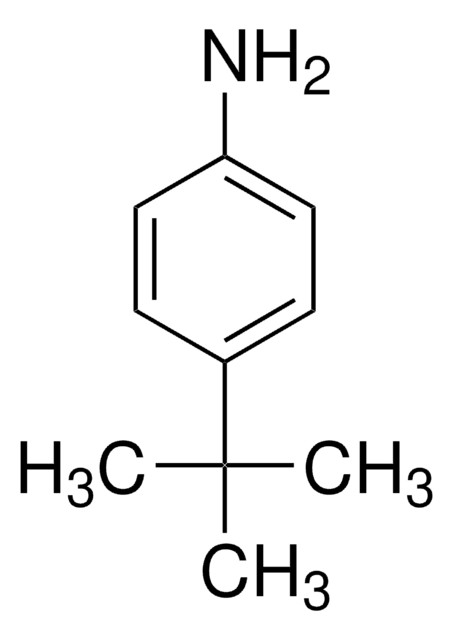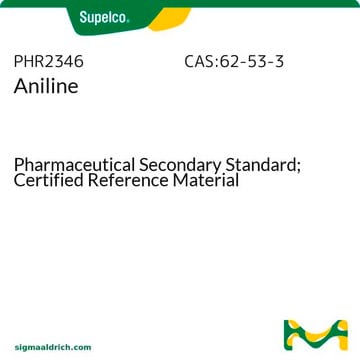132934
Aniline
ReagentPlus®, 99%
Sinônimo(s):
Aminobenzene, Benzenamine
About This Item
Produtos recomendados
densidade de vapor
3.22 (185 °C, vs air)
Nível de qualidade
pressão de vapor
0.7 mmHg ( 25 °C)
linha de produto
ReagentPlus®
Ensaio
99%
forma
liquid
temperatura de autoignição
1139 °F
Lim. expl.
11 %
índice de refração
n20/D 1.586 (lit.)
pH
8.8 (20 °C, 36 g/L)
pb
184 °C (lit.)
pf
−6 °C (lit.)
solubilidade
water: soluble
densidade
1.022 g/mL at 25 °C (lit.)
cadeia de caracteres SMILES
Nc1ccccc1
InChI
1S/C6H7N/c7-6-4-2-1-3-5-6/h1-5H,7H2
chave InChI
PAYRUJLWNCNPSJ-UHFFFAOYSA-N
Procurando produtos similares? Visita Guia de comparação de produtos
Categorias relacionadas
Descrição geral
Aplicação
Ações bioquímicas/fisiológicas
propriedades físicas
Informações legais
Palavra indicadora
Danger
Frases de perigo
Declarações de precaução
Classificações de perigo
Acute Tox. 3 Dermal - Acute Tox. 3 Inhalation - Acute Tox. 3 Oral - Aquatic Acute 1 - Aquatic Chronic 1 - Carc. 2 - Eye Dam. 1 - Muta. 2 - Skin Sens. 1 - STOT RE 1
Órgãos-alvo
Blood
Código de classe de armazenamento
6.1A - Combustible acute toxic Cat. 1 and 2 / very toxic hazardous materials
Classe de risco de água (WGK)
WGK 3
Ponto de fulgor (°F)
158.0 °F - closed cup
Ponto de fulgor (°C)
70 °C - closed cup
Equipamento de proteção individual
Eyeshields, Faceshields, Gloves, type ABEK (EN14387) respirator filter
Choose from one of the most recent versions:
Já possui este produto?
Encontre a documentação dos produtos que você adquiriu recentemente na biblioteca de documentos.
Nossa equipe de cientistas tem experiência em todas as áreas de pesquisa, incluindo Life Sciences, ciência de materiais, síntese química, cromatografia, química analítica e muitas outras.
Entre em contato com a assistência técnica










